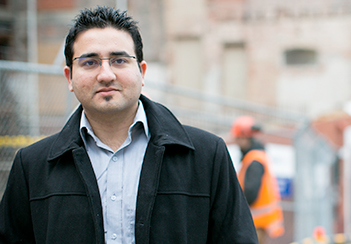
Ever since the Christchurch earthquakes, more than one Dunedinite has viewed the city’s beautiful historic buildings with a nervous appraising eye.
Doing more than wondering how safe they are is the Polytechnic’s Dr Najif Ismail, an expert in retrofitting unreinforced masonry (URM) – the kind that graces more than 700 buildings in Dunedin.
Retrofitting is not a new concept but there is limited reference material, especially for New Zealand. Najif aims to fill that gap.
After finishing his PhD at the University of Auckland, Najif joined the School of Architecture, Building and Engineering at the Polytechnic where he has been working closely with the Dunedin City Council and local engineers to assess and review the local building stock.
A study led by him and his team identified and recorded the characteristics of unreinforced buildings in the central business district (CBD) area and assessed their seismic vulnerability. The council’s earthquake-prone building policy is based in part on this study.
“We have estimated that, out of the 750 URM buildings in Dunedin, 680 are likely to be earthquake-prone. Additionally, numerous unrestrained parapets present the largest risk to life. The risk is increased by the concentration of these buildings in the CBD area, which has the highest foot traffic.”
But seismic strengthening of URM buildings and parapets is a not well understood, nor are its design parameters, explains Najif. That’s why he is keen to share research expertise with the local community and district councils.
“These buildings, which were built without any consideration for earthquake loading prior 1930s, are a major tourist attraction. If the city experiences an earthquake on the same scale as what Christchurch experienced, then there will be drastic changes in the city and will affect the economy of our community.”

